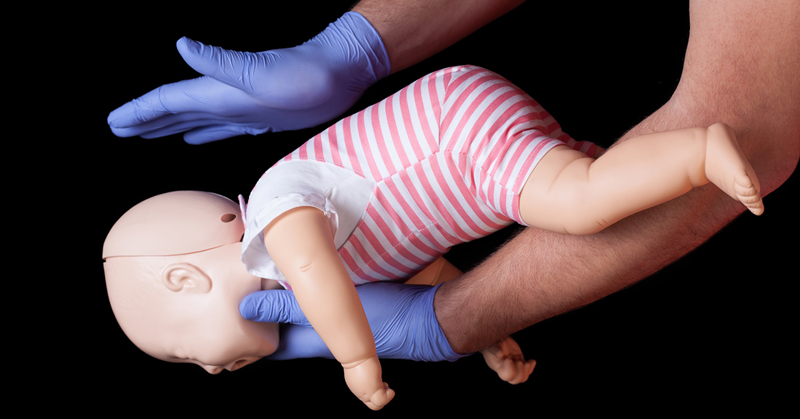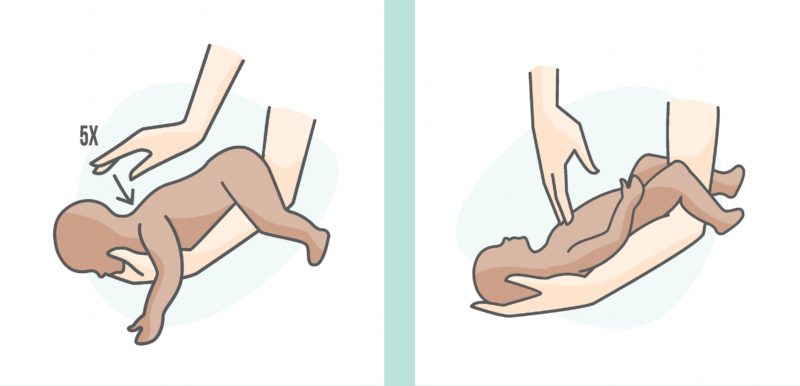Did you know a child dies every five days from choking on food?
According to St. John Ambulance, 40% of parents have watched their own baby choke, whether on food, toys, or coins. Even more startling is that 80% of these parents had absolutely no idea how to react to the situation.
Every day over the past decade, 34 children ended up in the emergency room from choking on food. Babies one-year-old and younger comprised about 38 percent of this number, tending to choke on formula or breast milk.
Candies were responsible for 1 in 4 ER trips, followed by meat bones, fruits, and vegetables.
It’s not uncommon for 10 percent of kids to require hospitalization after choking. In fact, kids who choked on hot dogs, seeds, or nuts were two to three times as likely to require it.
Signs Your Baby Is Choking
1. Blueish skin color
2. Difficulty breathing, labored breaths
3. Loss of consciousness
4. Inability to cry or make sounds
5. Weak coughing
6. Soft or high-pitched sounds when inhaling
How to Stop Your Baby From Choking
1. Perform a finger sweep by opening the child’s mouth and running your finger along the inside. Feel for any obstructions.
2. Lay your baby face-down, along your forearm. You can use your thigh or lap for support.
3. Hold your baby’s chest in your hand and hold the jaw with your fingers.
4. Point your baby’s head downward so it is lower than the body.
5. Using your palm, give up to 5 quick blows between your baby’s shoulders.
If this doesn’t work:
1. Turn your baby face-up on your thigh or lap. Support the head.
2. Place 2 fingers on the middle of his breastbone, just below the nipples.
3. Give 5 quick thrusts, pushing down about ½ the depth of the chest.
4. Alternate between this and 5 back blows.
If these methods don’t work or your child becomes unresponsive or turns blue, give infant CPR for 1 minute. Call 911 immediately following this (ideally, a second person would have done this while you first began giving aid). You can try to remove the stuck object with your finger, but only if you see it and only if the baby is unconscious.
Luckily, the best way to handle choking is to prevent it altogether.
Here are some simple ways you can save your baby’s life, solely by taking preventative measures:
1. Keep children younger than 4 away from round, firm foods. If necessary, cut them into little pieces. Cut grapes into quarters.
2. Never give toddlers hard candy, nuts, seeds, balloons, buttons, or raw carrots.
3. Don’t allow children to play, run, or lie down while eating.
4. Keep young children away from coins.
5. Always read the warning labels on toys! Many will warn of a choking hazard.
6. Learn CPR!
The best way to learn CPR is to attend a class taught by a certified instructor. You’ll find that many hospitals, community centers, and local chapters of the American Red Cross and American Heart Association offer these classes. Usually, the instructor will use a child-size mannequin to demonstrate. Many people find it’s much better to attend a class in person, rather than just simply read about it in books. And it’s better to do it before the baby’s born, when you’ll not only have more time, but be prepared!
To find a local CPR class, visit The Red Cross or call (800) RED-CROSS.
Sources:
Science Daily
St. John Ambulance
Fox News
Baby Center
Red Cross



